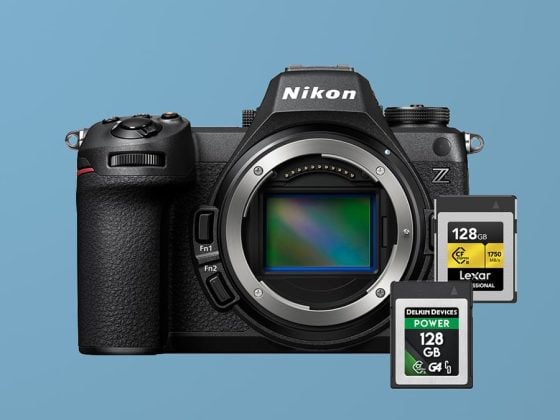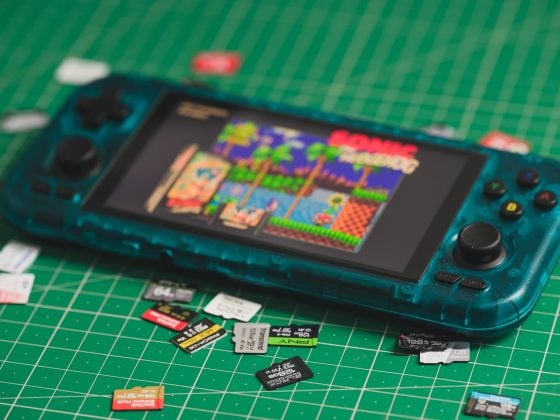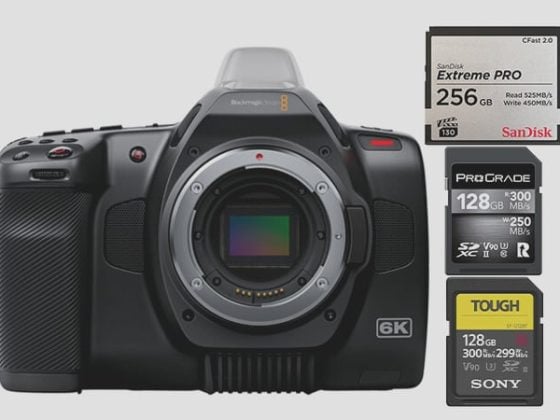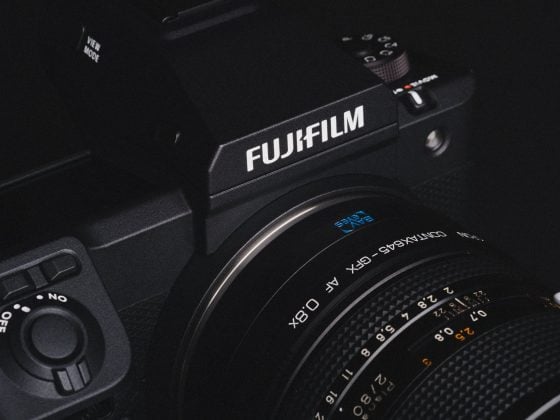A comparison between all the most popular UHS-II and UHS-I SD memory cards in the Nikon D500.
Use this guide to find the best memory cards for your style of shooting.
The Nikon D500 has one XQD or CFexpress Type-B Memory card slot and one UHS-II SD Memory Card Slot.
One thing I can assure you is that XQD or CFeB cards should run close to twice as fast as UHS-II cards; as long as you get the best cards. Check out the Nikon Z8 Memory Cards guide to see what CFexpress cards are best today.
USB 3.0 read and write speeds are determined using Crystal Disk on Windows 10.
| Memory Cards | USB 3.0 Read | USB 3.0 Write | Nikon D500 |
| XQD | |||
| Lexar 2933x 64GB XQD 2.0 | 440 MB/s | 400 MB/s | — |
| Lexar 1400x 64GB XQD | 210 MB/s | 185 MB/s | — |
| Sony G 64GB XQD 2.0 | 440 MB/s | 400 MB/s | — |
| Sony G 64GB XQD 2.0 | 400 MB/s | 350 MB/s | — |
| Sony M 64GB XQD | 440 MB/s | 150 MB/s | — |
| UHS-II | |||
| Lexar 2000x U3 64GB | 280.9 MB/s | 181.4 MB/s | 157.96 MB/s |
| Toshiba U3 64GB | 238.5 MB/s | 199.7 MB/s | 140.39 MB/s |
| Transcend U3 64GB | 268.9 MB/s | 174.3 MB/s | 135.03 MB/s |
| Delkin UHS-II U3 32GB | 245.1 MB/s | 164.6 MB/s | 134.88 MB/s |
| Sandisk Extreme Pro U3 64GB | 257.3 MB/s | 109.9 MB/s | 131.72 MB/s |
| Sony UHS-II U3 64GB | 253.2 MB/s | 91.62 MB/s | 84.22 MB/s |
| Lexar 1000x U3 64GB | 145.0 MB/s | 60.7 MB/s | 70.21 MB/s |
| UHS-I | |||
| Sandisk Extreme Pro 64GB U3 | 98.6 MB/s | 90.8 MB/s | 82.45 MB/s |
| Kingston 64GB U3 | 98.1 MB/s | 90.4 MB/s | 78.26 MB/s |
| Samsung Pro 64GB U1 | 96.3 MB/s | 82.2 MB/s | 73.25 MB/s |
| Sony 64GB U3 (Old Model) | 96.5 MB/s | 84.5 MB/s | 69.39 MB/s |
| Transcend 64GB U3 | 96.7 MB/s | 68.4 MB/s | 58.79 MB/s |
| Samsung Pro+ 64GB U3 | 97.5 MB/s | 87.3 MB/s | 58.21 MB/s |
| Lexar 633x 64GB U3 | 93.3 MB/s | 67.3 MB/s | 58.00 MB/s |
| Sandisk Extreme Plus 64GB U3 | 99.0 MB/s | 64.4 MB/s | 57.98 MB/s |
| PNY 64GB U1 | 96.5 MB/s | 66.5 MB/s | 57.61 MB/s |
| PNY 64GB U3 | 96.5 MB/s | 66.1 MB/s | 57.52 MB/s |
| Lexar 600x 64GB U1 | 95.4 MB/s | 64.8 MB/s | 54.63 MB/s |
| Sony 64GB U3 (New Model) | 96.7 MB/s | 56.2 MB/s | 54.37 MB/s |
| Samsung Pro 64GB U3 | 97.7 MB/s | 78.6 MB/s | 53.56 MB/s |
| Sandisk Extreme 64GB U3 | 72.43 MB/s | 54.1 MB/s | 49.49 MB/s |
| Samsung 64GB SDXC EVO U1 | 47.7 MB/s | 27.3 MB/s | 21.97 MB/s |
If you’re not going with XQD or CFeB or you need the fastest memory card for a backup slot, then it seems UHS-II cards are the way to go. The Lexar 2000x hands down destroys the competition. Although there is a Sandisk UHS-II 300MB/s card I just ordered. It was impossible to find for a while. So when I retest XQD cards I’ll also test that bad boy.
Fastest Memory Cards For the Nikon D500 | The Results
Best UHS-II Memory Card
Since the Nikon D500 uses the UHS-II memory card interface it makes sense to buy the best UHS-II cards you can get. Right now the best-performing cards that I tested were the Lexar 2000x and the Toshiba. Third and fourth are Transcend and Delkin. While Toshiba makes a great card, it’s often difficult to find it at a reasonable price, so I would gravitate toward a Transcend or Delkin if you don’t want Lexar. There is also the Sandisk Extreme 300MB/s card that will likely perform on par with the 2000x. But it’s still untested.
Lexar 2000x UHS-II V90 128GB SD Card
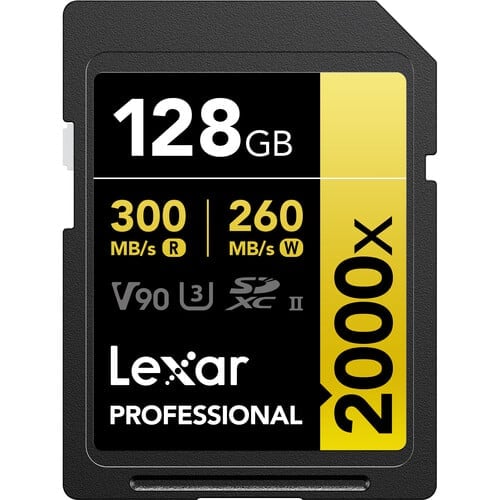
The Lexar Professional 2000x UHS-II SDXC memory card comes in sizes from 32GB to 256GB.
Tested Write Speed: 228MB/s
Tested Read Speed: 256MB/s
Rated Sustain: 90MB/s
Warranty: Limited 10-Year Manufacturer Warranty
See Details: Lexar 2000x UHS-II V90 Review
Sandisk Extreme Pro UHS-II SD Memory Cards
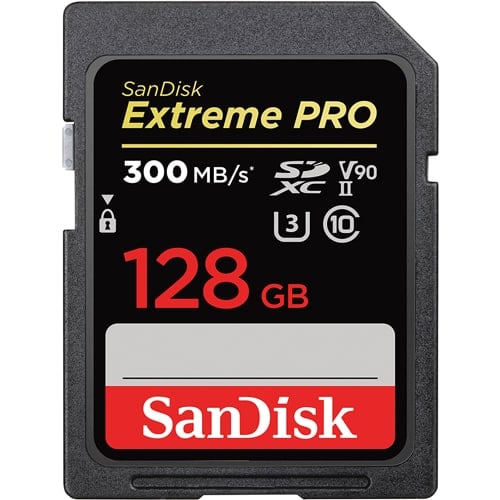
The Sandisk Extreme Pro UHS-II SD is one of the most popular and reliable high-performance v90 memory cards.
Tested Write Speed: 268 MB/s
Tested Read Speed: 293 MB/s
Rated Sustain: 90 MB/s
See Details: Sandisk Extreme Pro V90 UHS-II Review
Warranty: Limited Lifetime Warranty
Kingston Canvas React Plus v90 UHS-II SD Card
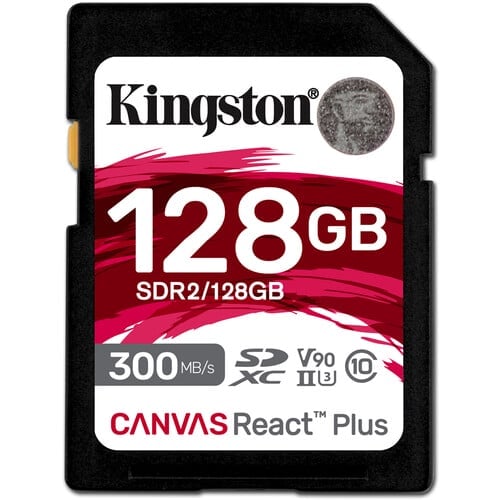
The Kingston Canvas React UHS-II SDXC memory card comes in sizes from 32GB to 256GB.
Tested Write Speed: 273 MB/s
Tested Read Speed: 292 MB/s
Rated Sustain: 90MB/s
Limited Lifetime Warranty.
Best UHS-I Memory Cards
If you already have a great XQD card and want some backup card for JPEGs or something, then UHS-I cards will be fine. But keep in mind, that putting in a slow card into slot two when running dual backup, will create a speed bottleneck. So only use slower cards if you’re using RAW+JPEG where the JPEG files are going to the second card slot.
Sandisk Extreme Pro UHS-I 128GB SD Card
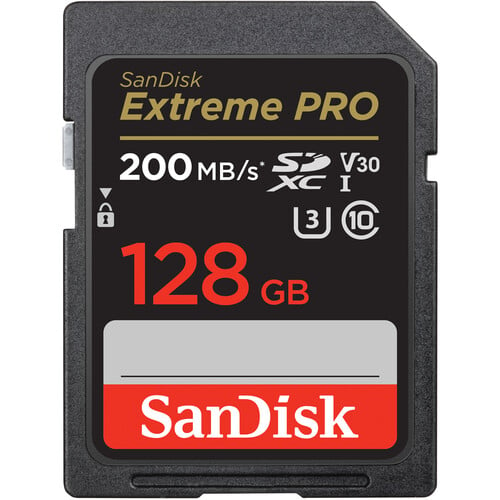
The Sandisk Extreme Pro UHS-I SDXC Memory Card at 128GB is rated with a 90MB/s write speed. The 256GB and larger cards are rated at 140MB/s.
Rated Write Speed: 90MB/s
Rated Read Speed: 200MB/s
Rated Sustain: 30MB/s
Kingston CanvasGo! Plus UHS-I 128GB SD Card
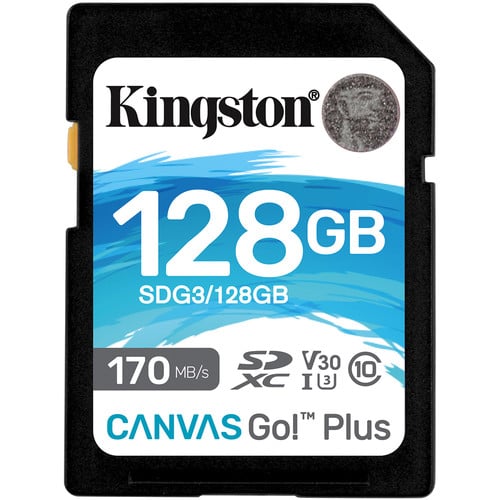
Kingston CanvasGo! Plus SDXC UHS-I SD cards 128GB or higher have a rated write speed of 90MB/s and a rated read speed of 170MB/s.
Rated Write Speed: 90MB/s
Rated Read Speed: 170MB/s
Rated Sustain: 30MB/s
Camera Specs
Sensor: APS-C 20.9MP / Processor: EXPEED 5
Memory Card Type: XQD / SD UHS-I / UHS-II
Video: 3840 x 2160p / 30 fps
Est. Size Of Buffer: 1.25 GB
Continues Shooting Speed: 10fps
Shots To Fill Buffer: 43 RAW Lexar 2000x
Time To Clear Buffer: 7.5 seconds – Lexar 2000x
Where To Buy Memory Cards
If you don’t buy a memory card from one of the links above, you’ll need to be careful you don’t get counterfeit cards. They are very common on eBay, even sometimes on Amazon. Always make sure you buy your cards from a trusted source on Amazon, or a trusted camera store like Adorama, or B&HPhoto.
I would avoid buying any memory cards on eBay.
Best Memory Card For Video In The Nikon D500
While the Nikon D500 shoots 4k video, its bandwidth isn’t all that overwhelming and you’ll likely not need anything special in terms of memory cards. However, just to be safe, I would stick with at least U3 memory cards if you’re not going to buy XQD or UHS-II cards.
Frequently Ask Questions
I’ve been doing these memory card speed tests for several years now and I get a lot of the same questions asked, so I’ll do my best to answer those here.
What’s the difference between U1 and U3 SD Memory cards? – The main difference has to do with minimum write speeds. U1 cards are guaranteed to write at a minimum speed of 10MB/s, and U3 SD memory cards can write at a minimum speed of 30MB/s. Now of course many things go on inside the camera that might not guarantee this, but it’s usually not the card’s fault. You’ll also start seeing V30, V60, and V90 written on cards. This has to do with the minimum write speeds of V30 – 30MB/s, V60 – 60MB/s, and V90 – 90MB/s.
What’s the difference between SDHC and SDXC with SD memory cards? – This has to do with the formatting of the card. SDHC cards are Fat32, and SDXC cards are exFat. Now pretty much SDHC means any card 32GB and smaller, and SDXC means 64GB and larger.
My memory card is creating corrupt shots what do I do? – Unfortunately in this situation, you likely have a bad card. There isn’t a lot you can do about this other than to replace your card.
My memory card doesn’t work what do I do? – You could likely have a bad memory card, but also make sure you always format your card in the camera. This tends to reduce issues with cards not working or not performing correctly.
My buffer keeps getting filled when recording video. – This usually means you’re memory card is not fast enough and you’ll need get a faster card. If you already have a card on the list above, you should try a different brand. Not all cameras work the same with each card, different production cycles between cameras and cards can produce various results and there is no guarantee the cards I rated will work perfectly with your camera. Lexar, Toshiba, Samsung and Sandisk are usually pretty safe bets.
Can I use Micro SD memory cards? – Yes you can, but there are a lot of crappy out there. I have just about every one made so just leave me a comment if you want to know if they work or not.
Best Memory Card For The Nikon D500 | Conclusions
It seems the Nikon D500 is a true performance beast and you have so many options for memory storage. XQD cards are known to perform with crazy speeds, but if you’re looking to save a buck, UHS-II memory cards also perform very well and will suit most people just fine.
Keep in mind if you do run a dual memory card setup that your second card will be your bottleneck, so make sure you still get a fast UHS-II card for the second slot. If you’re just casually shooting then honestly, there is no reason to get XQD cards unless they go on sale or something.
| **This website contains affiliate links. We will earn a small commission on purchases made through these links. Some of the links used in these articles will direct you to Amazon. As an Amazon Associate, I earn from qualifying purchases. |


